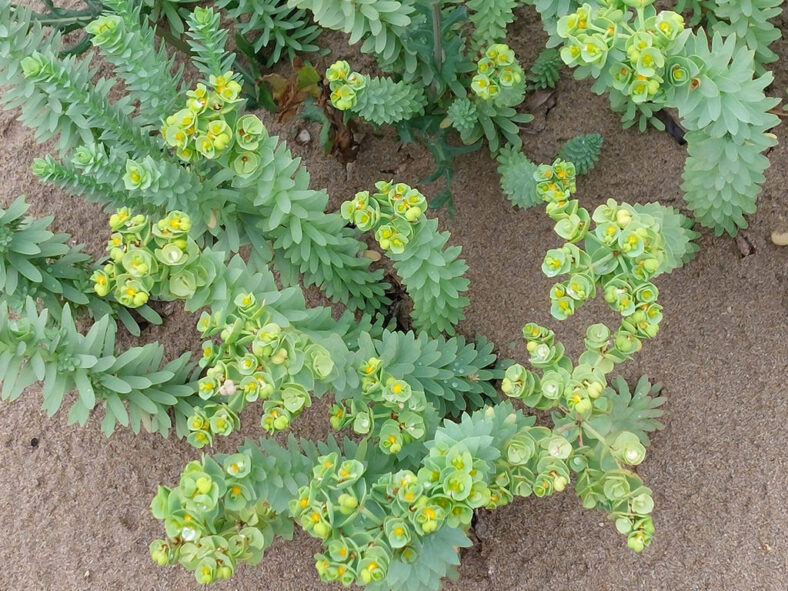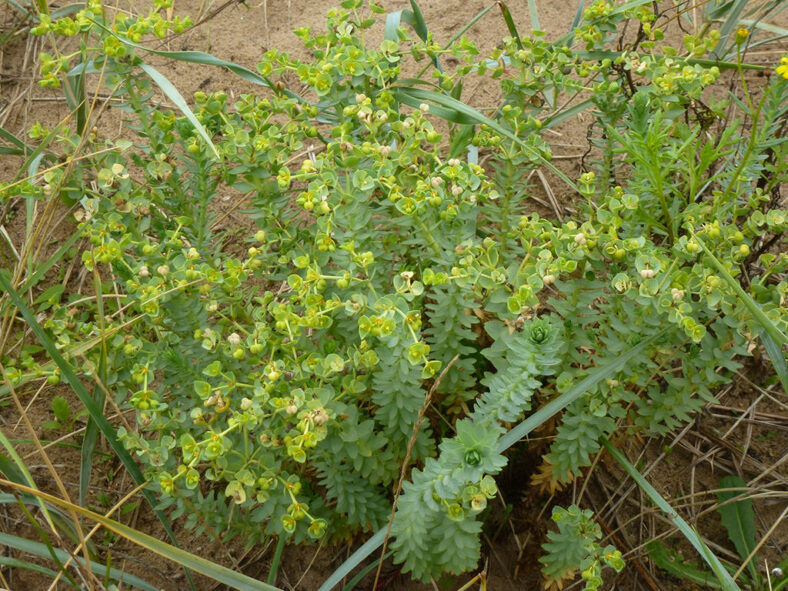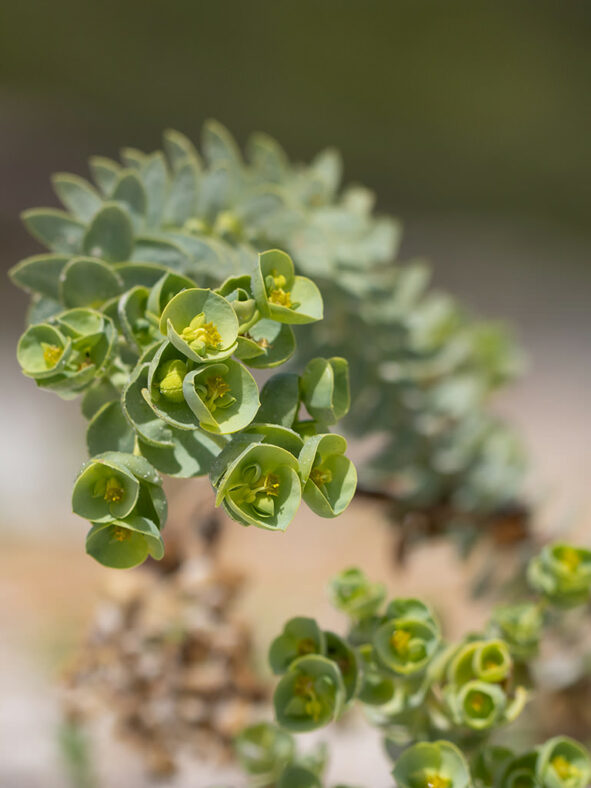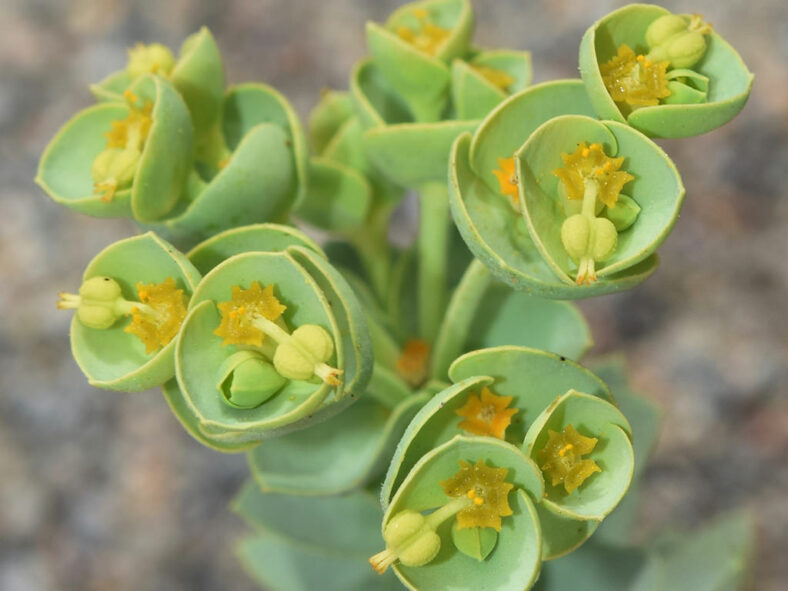Euphorbia paralias is a long-lived coastal plant used in traditional medicine for its anti-inflammatory, purgative, and local anesthetic properties.
Scientific Name
Euphorbia paralias L.
Common Name(s)
Sea Spurge
Synonym(s)
Esula paralias, Euphorbion paralium, Galarhoeus paralias, Tithymalus paralias
Scientific Classification
Family: Euphorbiaceae
Subfamily: Euphorbioideae
Tribe: Euphorbieae
Subtribe: Euphorbiinae
Genus: Euphorbia
Etymology
The specific epithet "paralias (par-uh-LEE-as)" means "beach, seashore; seaside" and refers to the native habitat of the species.
Origin
Euphorbia paralias is native to western and southern Europe, the Canary Islands, northern Africa, and western Asia. It typically grows on sandy beaches and sand dunes. However, this species is widely naturized in Australia, where it is considered an invasive beach weed.
Description
Euphorbia paralias is a succulent subshrub with upright stems covered in tightly packed, somewhat fleshy leaves. The stems can grow up to 32 inches (70 cm) tall, with 1 to 12 arising from the top of the rootstock. Each stem is divided into 3 to 10 terminal fertile branches, which are further branched. The leaves vary in shape from ovate to elliptic, have a pointed tip, and measure 1.2 inches (3 cm) long and 0.6 inches (1.5 cm) wide. As they approach the stem tip, they increase in size and are glaucous, sometimes tinged with red.
The cyathia are solitary, appear in the upper forks or terminal, surrounded by bell-shaped, yellow-green bracts from spring to fall. The fruits are dark green, deeply grooved capsules that mature to gray-brown, and each contains three pale-grey seeds.

How to Grow and Care for Euphorbia paralias
Light: Providing your Euphorbia paralias with plenty of sunlight is important for optimal growth. Place it near a sunny window or move it to your balcony or garden during the warmer months, gradually increasing sun exposure to avoid sunburn.
Soil: Use a well-draining soil, either a commercial potting mix formulated for succulents or create your own well-draining soil.
Temperature: While high summer temperatures are not a problem, low winter temperatures can damage or kill your plant. Euphorbia paralias grows best in USDA Plant Hardiness Zones 8a to 10b, with average minimum winter temperatures ranging from 10 to 40 °F (-12.2 to 4.4 °C).
Watering: From spring to fall, water the plant when the soil's top inch (2.5 cm) feels dry. Reduce watering in winter and give it just enough water to prevent wilting. In the warm season, evening is the best time of the day for watering.
Fertilizing: To ensure the potted plant receives sufficient nutrients, apply a balanced fertilizer in a 10-10-10 NPK formulation, diluted to 1/4 strength weekly during the growing season.
Repotting: Although your Euphorbia paralias does not need to be repotted often, it will benefit from repotting when it outgrows its pot. The repotting is best done in early spring at the beginning of the growing season. Wear gloves, protective clothing, and appropriate eye protection when handling this plant.
Propagation: The easiest and quickest way to propagate this plant is by stem cuttings. Although it can be started from seeds, it can be difficult for them to germinate. Take cuttings during the growing season, while spring is the best time for sowing the seeds.
Learn more at How to Grow and Care for Euphorbia.
Toxicity of Euphorbia paralias
Euphorbia paralias produces a poisonous white milky sap that may cause burns or irritation if in contact with the skin or eyes. Therefore, keeping this plant away from children and pets is best.
Links
- Back to genus Euphorbia
- Succupedia: Browse succulents by Scientific Name, Common Name, Genus, Family, USDA Hardiness Zone, Origin, or cacti by Genus
Photo Gallery
Click on a photo to see a larger version.


